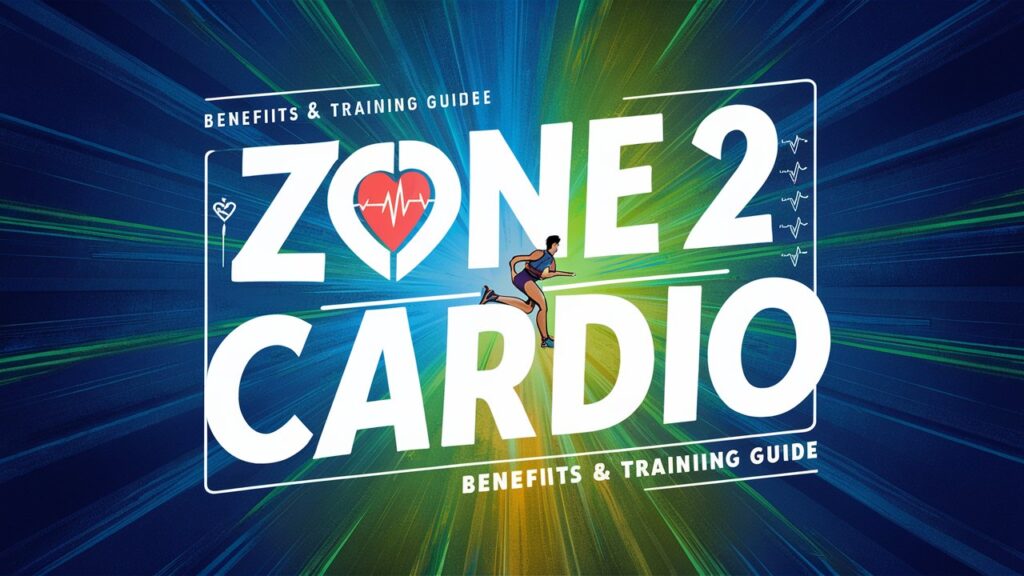Zone 2 Cardio: Benefits, Heart Rate Zones, and Training Guide:

Discover the power of Zone 2 cardio. Learn how to find your heart rate zone, reap the benefits of steady-state exercise, and build endurance with effective training strategies.
What is Zone 2 Cardio?
Zone 2 cardio is a steady-state exercise performed at a moderate intensity, typically between 60-70% of your maximum heart rate. This means you should be able to maintain a conversation while exercising without becoming breathless. Unlike high-intensity workouts, Zone 2 training focuses on endurance and efficiency.
“Zone 2 cardio” is one of the five heart rate zones, with five being the highest and one being (shocking, we know) the lowest, according to Dr. Charlotte. “[Zone 2] is at 60 to 70 percent of your max heart rate, so it’s a low-intensity, basic endurance pace without intervals,” she says. Basically, it’s a slow, steady effort that you could maintain for a long time while having a casual conversation with a friend or singing a song to yourself.
Zone 2 training is sometimes called “base training” because it should make up the majority or “the base” of your weekly workouts. “Zone 2 training (and zone 3 training) should be the main focus of an endurance athlete, with 60 to 75 percent of the training week taking place in these zones,” Dr. Charlotte says.
Zone 2 training helps you build a foundation of fitness—no matter your modality. Over time, it increases your aerobic capacity or your body’s ability to use oxygen efficiently during an athletic effort. Your easy workouts will eventually start to feel even easier, and harder workouts will feel, well, slightly less punishing.
The Benefits of Zone 2 Cardio

- Improved endurance: Regular Zone 2 training increases your body’s ability to use oxygen efficiently, allowing you to exercise for longer periods.
- Fat burning: Your body primarily uses fat as fuel in this zone, helping with weight management and body composition.
- Reduced risk of injury: Lower-impact exercise reduces stress on joints, making it suitable for people of all fitness levels.
- Enhanced recovery: Zone 2 workouts aid in muscle repair and recovery from intense training sessions.
- Mental health benefits: Steady-state exercise can reduce stress, anxiety, and improve mood.
At this point, you may be thinking, “Hmmm, I thought that hard, intense workouts offered the most when it comes to upping my heart health and endurance.” This common misconception may prompt you to push harder than you need to when you’re cycling, running, or participating in other forms of cardio. As a result, the benefits of this slower effort may surprise you.
1. Faster Recovery
Throwing a zone 2 session in the day after a tough workout may actually help you recover faster. In a small 2022 study published in PLoS One, researchers found that this type of workout improves blood flow in the body, which speeds up muscle repair without causing additional inflammation and damage to the muscles.
2. Increased Cardiovascular Fitness
“Aerobic training increases cardiovascular fitness, thereby reducing mortality, morbidity, and increasing longevity,” Dr. Charlotte says. “It reduces the risk of developing the most common cardiovascular illnesses like atherosclerosis, [which has] consequences like high blood pressure, stroke, and heart attack.”
3. Better Mental Health
If you’ve ever blown off steam by taking a long run, swim, or bike ride, you won’t be surprised to hear that zone 2 cardio can improve your mental health. A 2019 study published in Health Psychology Research found aerobic exercise boosted the self-esteem and social functioning of participants and decreased their anxiety, depression, and insomnia.
4. Injury Prevention
Zone 2 cardio takes less of a toll on your joints and muscles, potentially preventing injury as a result. By adding in a few easy days to your workout week, you’re giving your body plenty of time to rest and recover. Conversely, if you’re doing high-intensity interval training every single day, you may be placing unnecessary strain on your joints, increasing your chances of injury. “Zone 2 training should be the base for everyone doing endurance and also HIIT training,” Dr. Charlotte says. “Even weightlifters who normally avoid cardio can actually profit from building an aerobic base with zone 2 training.”
5. Sustainability
Because zone 2 cardio doesn’t leave you winded, sore, and ready to crash on the couch for a while, you may find it easier to adhere to a workout routine that includes it. And research shows that those who find ease in their exercise routines are more likely to stick with them.
Heart Rate Zones Explained
Heart rate zones divide exercise intensity into different levels based on your maximum heart rate (MHR). Zone 2 typically falls between 60-70% of your MHR.
Now for the math part of zone 2 training. Don’t worry: Determining your zone 2 heart rate is easier than your high school algebra class. To start, you’ll need to calculate your max heart rate.
How to Calculate Your Max Heart Rate

To discover your max heart rate (MHR), subtract your age from 220 (220 – x = your max heart rate zone). For example, a 30-year-old—let’s call her Suzanne—would have a max heart rate of 190 beats per minute. Once you have this number, you’re ready to find your heart rate zones.
- Zone 1: Very light intensity, ideal for recovery.
- Zone 2: Moderate intensity, focused on endurance.
- Zone 3: Threshold training, pushing your limits.
- Zone 4: Interval training, short bursts of high intensity.
- Zone 5: Maximal effort, for short durations.
To calculate your heart rate zones:
- Determine your maximum heart rate (MHR): This is typically estimated as 220 minus your age.
- Multiply your MHR by the percentage for each zone.
How to Start Training in Zone 2
- Invest in a heart rate monitor: Accurately tracking your heart rate is essential.
- Start gradually: Begin with shorter sessions and gradually increase duration.
- Find enjoyable activities: Choose activities you enjoy, such as running, cycling, swimming, or hiking.
- Listen to your body: Pay attention to how you feel and adjust intensity accordingly.
- Combine with other training: Incorporate Zone 2 training into a balanced fitness routine.
Types of Zone 2 Cardio

The beauty of Zone 2 cardio is its versatility. Almost any steady-state aerobic activity can be performed within this heart rate range. Here are some popular options:
Low-Impact Options
- Walking: A great starting point for beginners or those recovering from injuries.
- Swimming: Offers low-impact benefits and full-body engagement.
- Cycling: Indoor or outdoor cycling can be adjusted to maintain a Zone 2 pace.
- Elliptical training: Provides a smooth, low-impact workout.
- Rowing: Engages both upper and lower body in a rhythmic motion.
Higher-Impact Options
- Running: A classic choice for endurance athletes.
- Hiking: Offers varied terrain and combines cardio with nature.
Remember: The key to Zone 2 cardio is consistency. Choose activities you enjoy and can sustain for extended periods.
- Also Read :
- 6 Cardio Workouts You Can Do At The Gym
- Effective Cardio Workouts at Home for Weight Loss
- Cardio Before or After Weights: Maximize Your Workout
- Best Steady State Cardio Exercises for Weight Loss
Can I lose weight with Zone 2 cardio?
Yes, Zone 2 cardio can contribute to weight loss by burning fat. However, it’s essential to combine it with a balanced diet for optimal results.
How long should I do Zone 2 cardio?
Aim for 45-90 minutes of Zone 2 training per session, 2-3 times per week.
Can beginners start with Zone 2 cardio?
Absolutely! Zone 2 is a great starting point for building endurance.
Can I do Zone 2 cardio every day?
While it’s possible, it’s recommended to incorporate rest days into your routine for optimal recovery.





